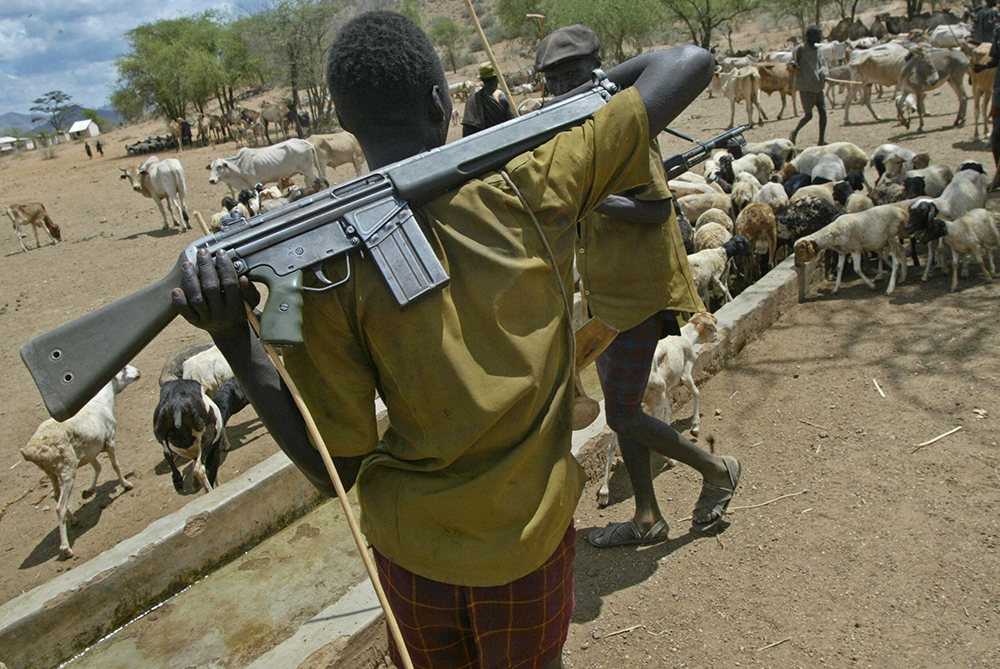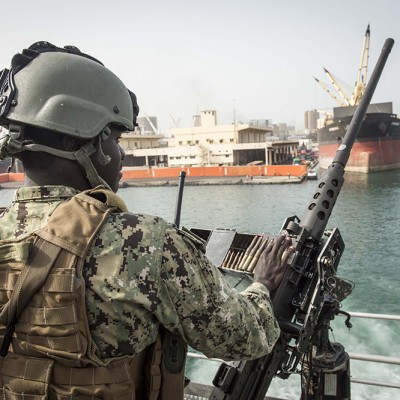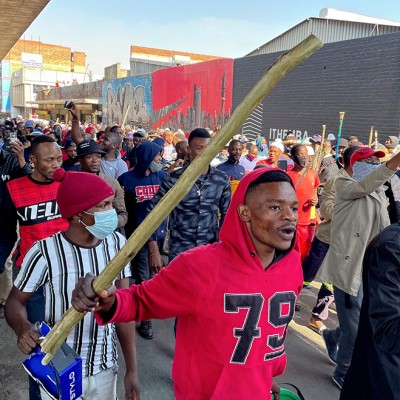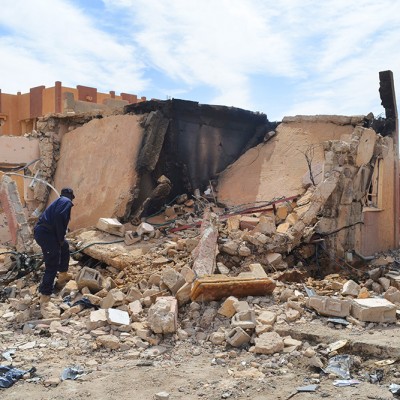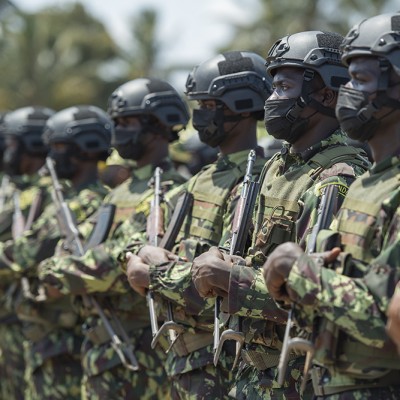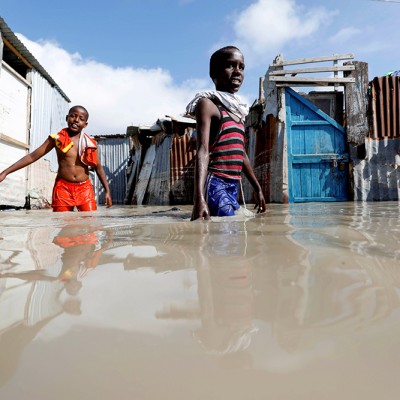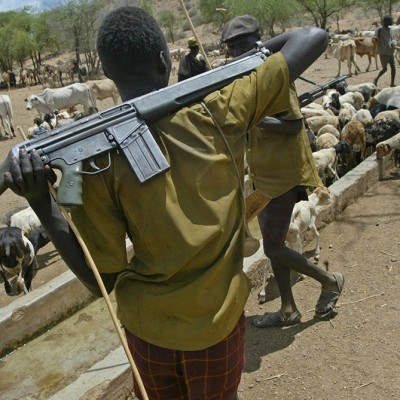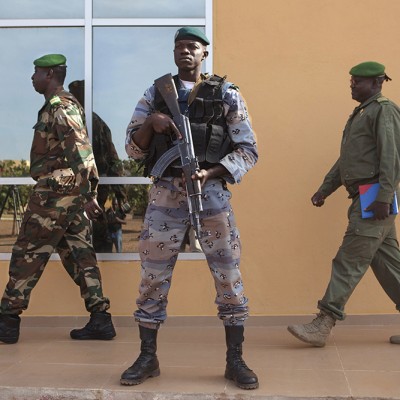Introduction
In pre-colonial times, young men from pastoralist communities in Northern Kenya conducted cattle raids to enable their households or clans to replenish decimated herds after droughts or to acquire livestock for the payment of bridewealth.[1]Today, such raids are carried out mainly to solidify ethnic-based group identity for political competition or as resource scrambles.[2] Mobilisation for large cattle raids is carried out with ethno-nationalistic orientations that seek to entrench ‘us’ versus ‘them’ narratives as a prerequisite for the raids.[3] Although cattle raids are carried out by warriors (circumcised young men between the age of 15 and 30), the violence that accompanies the raids is significantly fuelled by ethnic identity politics and ethno-nationalistic mobilisation involving politicians and the educated elite.[4] In the town of Baragoi in Kenya, major raids and massacres have occurred after periods of mobilisation based on ethnic identities. In this article, a massacre is described as the intentional, indiscriminate murder of a group of people due to their socio-political orientations, such as ethnic identity or political allegiance.
Unlike cattle raids of the pre-colonial era in which the aim of violence was to acquire cattle forcefully, recent massacres among pastoralists in Northern Kenya are intended to convey a message of incompatibility between two or more communities within a common geographical area (often in-land and in boundary zones). Disputes between communities may be aimed at forcefully evicting political opponents and their supporters from a common area in the run-up to a competitive political period, thus denying them a chance to cast their ballots. Massacres may arise out of such disputes and may be perpetrated to ensure a win for the organisers of the massacre. This article, therefore, examines the processes of violence escalation based on the assumption that the escalation of conflict into violence elucidates the contested relationships between two warring groups.[5]
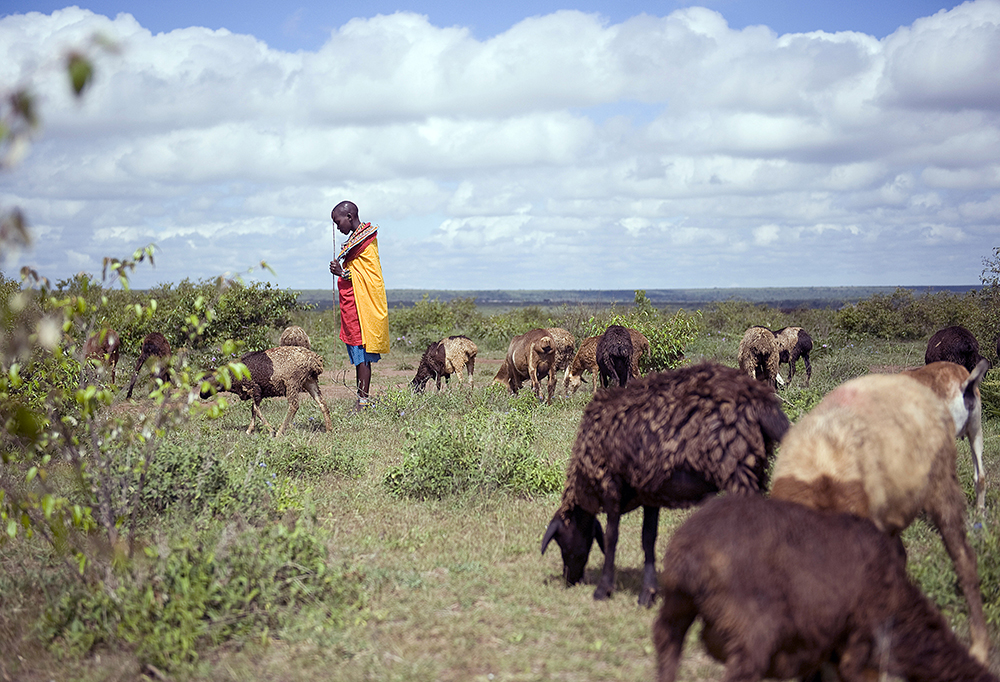
Background to the Baragoi Massacre
The Baragoi massacre occurred in November 2012. Details of the massacre are drawn from an investigative report published by the Kenya Police, which provides a chronology of events before, during and after the massacre.[6] It includes interviews with police officers who participated in the botched operation, priests from Baragoi Catholic Parish, young men from the age of 15 to 30 years who are responsible for providing community security and who are known as morans, elders and women from the Samburu and Turkana communities. The massacre was triggered by a Turkana raid of Samburu livestock at Lesirkan village in Ndoto location on 20 October 2012. The Turkana and Samburu are pastoralist groups living in Northern Kenya. Raids between the Samburu and Turkana are common and often well-calculated missions. Mashujaa Day (from Swahili, meaning Heroes Day) is a public holiday held on 20 October each year in Kenya. The raiders chose this day as security personnel were engaged in holiday celebrations. Turkana raiders from Lomerok manyatta in Nachola location made off with 501 head of cattle from the Letipila family. According to the police reports, the raided animals belonged to the following people: Nkoyai Letipila (129 head of cattle); Nginguge Letipila (176 head of cattle); Zaire Letipila, a nominated councillor (116 head of cattle); and Eli Letipila (80 head of cattle).[7]
The police report noted that police officers from Baragoi were mobilised to track the stolen animals, and they caught up with the alleged raiders at Lomerok village, where there was an exchange of gunfire.[8] The police were overpowered by the raiders and forced to withdraw. On 21 October 2012, the Baragoi police were reinforced by the Anti-Stock Theft Unit (ASTU), a specialised unit formed to track and recover stolen livestock. The police team then proceeded to Lomerok village, but they were again overpowered and forced to withdraw. In an interview with a police officer who participated in the botched operation that became the Baragoi massacre, I was informed that the failure of the police contingents to recover the raided livestock in two attempts forced the police and administrators to consider using community elders in a series of peacebuilding efforts.[9]
As a result of the dialogue intervention by the elders, the Turkana returned 20 head of cattle on 23 October 2012 and another ten on 25 October 2012. According to the police report, by this time, ‘about 400 armed Samburu morans’ had been mobilised for retaliation against the Turkana.[10] Samburu warrior-age sets from across Samburu County were mobilised by senior politicians in readiness for revenge raids. A Samburu moran shared how ammunition was distributed to them by Baragoi police officers in the presence of local politicians. Despite the mobilisation of morans for revenge, the efforts of elders to return the stolen animals continued. On 27 October 2012, Turkana elders brought back a further 14 head of cattle. However, the Samburu elders allegedly rejected eight of these animals on the grounds that they did not bear the Samburu clan branding. According to the police report, the delay in returning the remainder of the raided animals created tension in Baragoi town and ‘the Samburus roamed Baragoi town with their firearms’. By 29 October 2012, there were about 600 Samburu warriors camped at the District Commissioner’s office compound. These warriors invaded Lomerok village in an attempt to capture livestock. The Samburu morans made off with 205 camels from Lomerok village, but 12 Samburu morans were killed while three Turkana morans were injured.
On 1 November 2012, senior police officers from the provincial headquarters based in Nakuru visited Baragoi and held meetings with Samburu North administrators, police officers, and elders from the Samburu and Turkana communities. In this meeting, Turkana elders were urged to ensure the return of the remaining Samburu cattle, while the issue of the raided Turkana camels was not raised. The police officers gave the Turkana elders the deadline of 5 November 2012 for returning the cattle. Failure would result in a paramilitary operation against raiders believed to be hidden in Lomerok village. In a meeting called by a senior police officer to assess the progress of inter-communal dialogue between Turkana and Samburu elders on 4 November 2012, only Turkana elders attended and informed the police of their willingness to return 12 more head of cattle.[11] On 5 November 2012, at a meeting arranged for the purpose of handing over the animals, the elders from both sides failed to return the stolen animals, and it was apparent that inter-communal dialogue had failed.
The Samburu County Commissioner declared that an operation to recover the stolen animals would be launched against the Turkana. The operation was named ‘Rudisha Ngombe’ (Return the Livestock). It targeted the Turkana village of Lomerok but ignored the Samburu raiders who had taken 205 Turkana camels on 29 October 2012. The mobilisation of Samburu morans and reinforcement of police contingents from other parts of the Rift Valley continued in Baragoi town in readiness for the paramilitary operation. According to the report, on 10 November 2012, a ‘combined force of 132 police officers and hundreds of Kenya Police Reservists from the Samburu community’ were assembled for the operation on Lomerok village.[12] The combined force was ambushed by Turkana morans and about 105 people were killed, among these 42 police officers.[13] A further 14 police officers were injured, and a total of 29 firearms were taken by the Turkana morans. The massacre led to the displacement of people from the area and the loss of livelihoods from pastoralism to dependency on relief supplies.
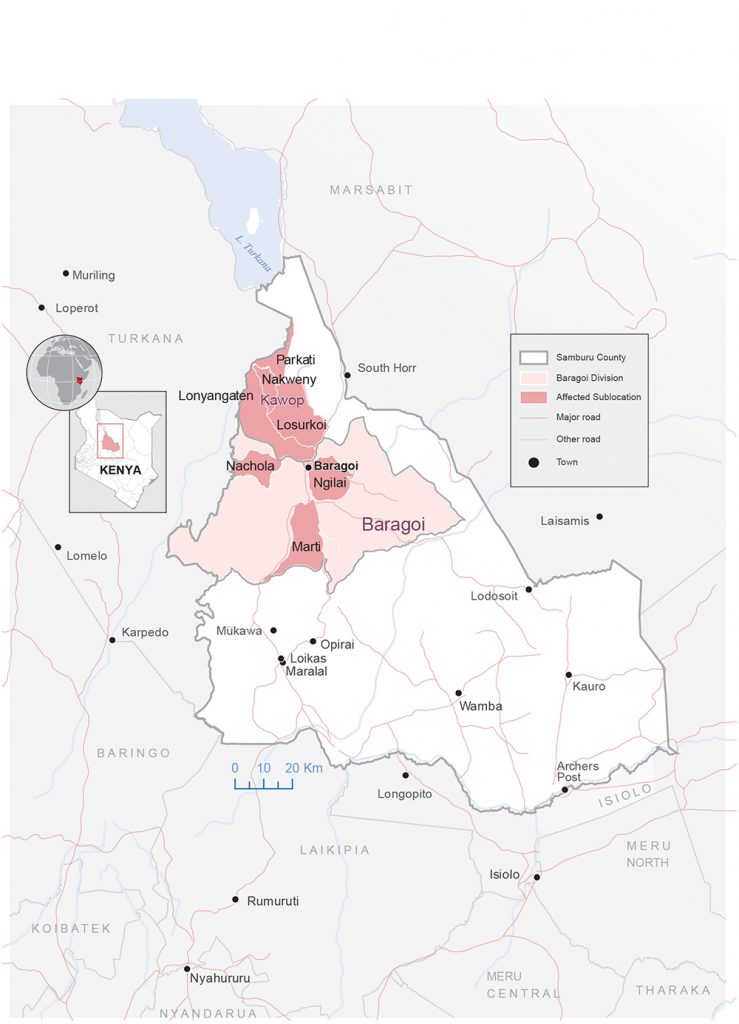
Pastoralist Violence and the Processual Approach
Conflicts and violence between pastoralists have been explained through structural perspectives. These have focused on resource scarcity,[14] institutional weakness or failure,[15] local politics, and the colonial history of violent conquest in pastoralist areas.[16] Based on cases from Cameroon and Burkina Faso, Moritz argues that even though these structural factors can precipitate conflicts and violence among pastoralists, at times, violence does not occur in other pastoralist conflicts despite the presence of conflict conditions.[17] In Kenya, there are examples of cooperation between the Samburu and Rendille who live side by side with limited raiding that rarely intensifies into massive raids and massacres.[18] Citing cases from Ghana, Tonah explains that while conflicts between local farmers and Fulbe herders have, at times, led to inter-communal violence, many similar conflicts have been solved without escalation.[19]
Basset argues that conflicts involving herders are complicated by various dynamics.[20] Moritz views conflicts between herders and farmers in West Africa as involving structural and processual causes.[21] He argues that explanations of violent conflicts involving pastoralists and agro-pastoralists often ignore the role of processes that proceed immediately after a dispute between herders. According to Moritz, structural factors, such as state weakness and environmental scarcity, can explain the triggers of conflicts ‘while processual variables can explain conflict outcomes’.[22] Sandole notes the existence of two levels of conflicts: conflict as a start-up and conflict as a process.[23] Conflict as a start-up means that there are underlying challenges that fuel contests between groups. These could be the inability of the state to police its borders, thus allowing the flow of small arms and light weapons into a territory. Conflict as a process refers to the series of events that propel a conflict situation towards a massacre. These could be the mobilisation of warriors by a political leader or the massive purchase of arms by elites from one community in the guise of ‘protecting their people’. Kratli and Swift further capture the conflict processes that lead to violence in the following statement:
As the raided herds need to be restocked, professional raids — well equipped, organized, highly effective — may cause a shower of clan raids — smaller, less equipped, extemporaneous — easily generating a chain reaction of violence.[24]
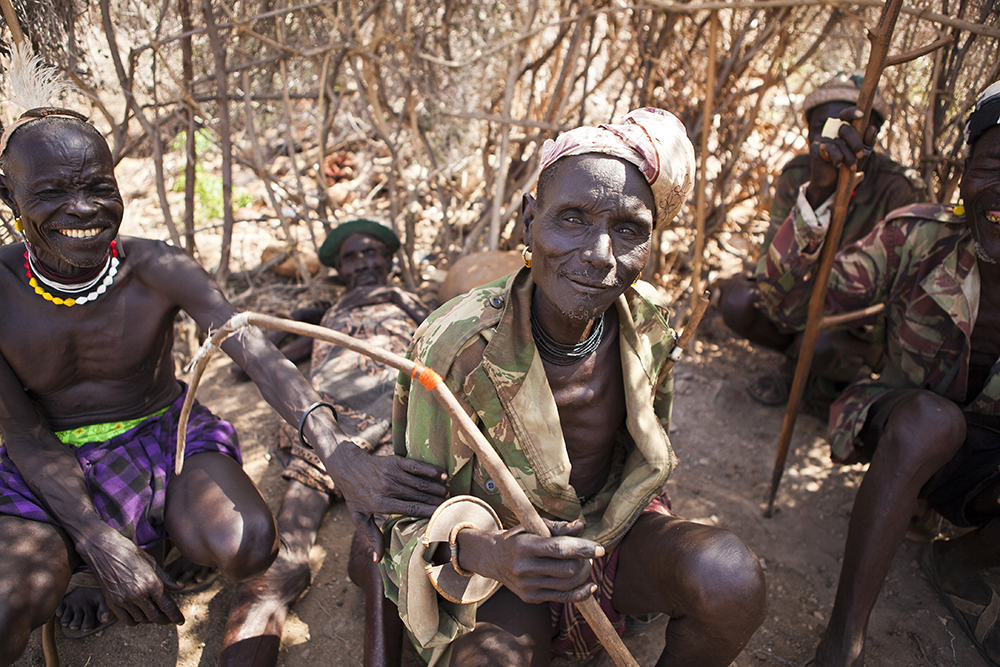
Processualists view conflicts according to complex phases of contests in efforts to establish their patterns and processes.[25] Based on Pruitt and Kim, one can analyse the escalation of pastoralist violence through five critical transformations, namely, shifts from small to large conflicts, light to heavy tactics, specific to general conflicts, and few to many actors, as well as shifts in the goals of the conflict.[26] This article analyses the Baragoi massacre using the framework of processual analysis of conflicts and the five critical conflict transformations as espoused by Moritz and Pruitt and Kim, respectively.[27]
Escalation of raids into violence is a process affected by several factors. According to Spencer, raids escalate when the ‘rules’ of raiding are not adhered to.[28] The chances of escalation are determined by the number of livestock raided. In the event that a significant number of livestock is stolen, the possibility of revenge raiding is higher. Escalation also depends on police action. In situations where the police make successful recovery efforts after major raids, conflicts more readily dissipate. However, in situations such as the Baragoi massacre where recovery efforts are thwarted by the raiders, impatience on the part of the raided morans led them to take the law into their own hands, thus adding to the tension and fear that already existed in the area. Kratli and Swift view the escalation of communal violence due to cattle raiding as the result of ethnic organisation and strategic decision-making involving actors who are not primarily involved in raiding.[29]They argue that the escalation of conflicts stemming from cattle raids may, in essence, be a guise for the pursuit of power by interested groups. The escalation of conflicts in Northern Kenya is, therefore, viewed as a means by which one group can gain political, economic, or socio-cultural power over another group through the use of violence. Kratli and Swift further argue that the violence used in raids can itself be viewed as a type of resource employed in the pursuit of power at individual, group, and communal levels.[30]
From Raid to Massacre: A Processual Analysis of Violence
Using the Baragoi massacre as a case study, the article draws from Pruitt and Kim and Moritz, among others, to conduct a processual analysis of the violence escalation that led to the massacre. The following sections discuss the escalation of pastoralist violence through the lens of the five critical transformations identified by Pruitt and Kim.
Shift from Small to Large Conflict
Pruitt and Kim argue that conflicts escalate when the number of actors involved increases from those who have a primary interest in the dispute to actors who are not directly involved.[31] They argue that the entry of other actors who are remotely involved in the conflict inhibits negotiation and conciliation efforts that would occur if the dispute was left to the primary group. In the case of the Baragoi massacre, the primary victims were four members of the same family. However, immediately after the raid and prior to the massacre, one of these individuals used his position as a political leader to mobilise Samburu morans as active participants in the search for the raided livestock.[32] The involvement of Samburu morans increased tension in Baragoi. The hostility in the town was further exacerbated by the mobilisation of police officers from other districts, which signalled an impending paramilitary operation. This led the communities, especially the Turkana, to mobilise defensively to protect their livestock and villages. The conflict, which started as a raid by Turkana warriors on specific Samburu family herds, became a confrontation involving actors with divergent interests.
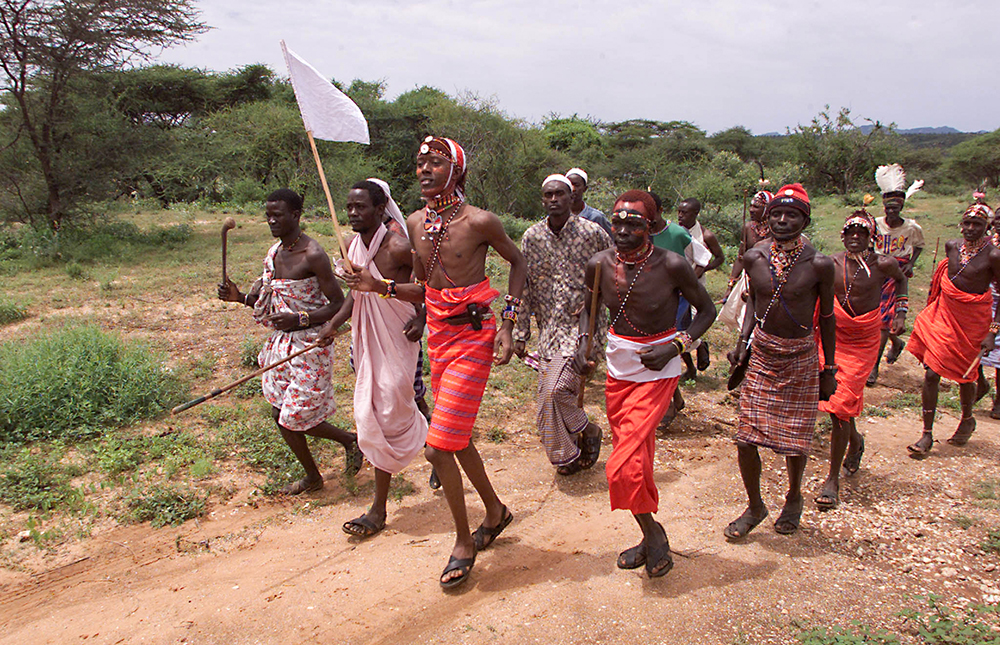
Shift from Light to Heavy Tactics
Immediately after the raid, there were efforts at inter-communal negotiation using elders, as is the custom among many pastoralist societies.[33] The Turkana elders attempted to rescue the dire situation through the return of stolen livestock. However, their efforts were not helped by the revenge raid by Samburu morans from El Barta on Lomerok, which led to 12 deaths and three injuries. This raid ended the elders’ efforts and solidified the hardline positions of the two groups. It further led to the massive mobilisation of Samburu warriors in Baragoi, while Turkana warriors mobilised for the defence of their villages, especially in Lomerok. Police officers from other parts of the province were also brought into Baragoi in readiness for a paramilitary intervention leading to the launch of Operation Rudisha Ngombe.
Shift from Specific to General Conflict
In the ensuing days after the raid in Lesirkan by the Turkana, the situation soon intensified with the mobilisation of up to 600 Samburu morans and Kenya Police Reservists (KPRs) who participated in the 29 October 2012 raid as well as the paramilitary Operation Rudisha Ngombe on 10 November 2012.[34] The participation of both armed Samburu warriors and KPRs in the paramilitary police exercise points to the level of mobilisation and political pressure that was exerted on the police officers. Violence among the Samburu and Turkana of Baragoi, therefore, began to draw in a growing number of people from the broader communities, with KPRs employed to bolster firepower against enemy groups.
Shift from Few to Many Actors
Pruitt and Kim argue that at the beginning of a conflict, there are few people involved; escalation takes place if, for some reason, more people are drawn into the conflict.[35] In the case of the Baragoi massacre, the victims of the Turkana raid on 20 October 2012 included four Samburu households. The raiders were not specifically identified, but in the police record, it was noted that the Turkana raiders were tracked to Lomirok manyatta. The escalation of this conflict was propelled by the fact that one of the victims of the cattle theft was a local politician (a nominated councillor) who not only put the police under pressure but also mobilised Samburu KPRs in efforts to recover his animals. The role of this politician in the escalation of the Baragoi massacre was captured in the following words of one respondent:
We reached Lomerok and saw a police helicopter overhead. The police helicopter landed nearby and they informed us that they had seen the stolen animals not far away from where we were. It was now approaching 5:00 pm. In our vehicle, we carried the councillor whose cattle had been stolen. He was worried and he was pressuring us to get his animals. We were also accompanied by Samburu KPRs.[36]
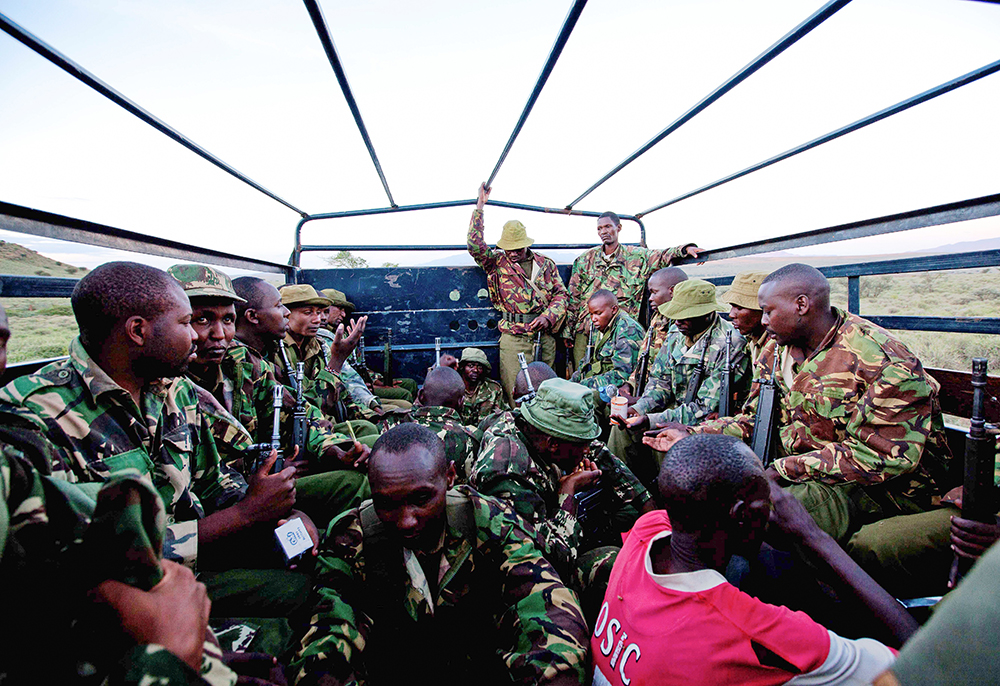
Shift in the Goals of the Conflict – From Raids to Ethnic Violence
According to Pruitt and Kim, conflicts intensify when the goals of the conflict change.[37] To shift the goals of the conflict, Kratli and Swift argue that there must be a major ‘ethnic fracture’ based on hate, fear and distrust, which closes the door on any form of dialogue and refocuses the communities on preparations for violence.[38] Before the Baragoi massacre, the initial goal of the police and the primary victims of the raid from the Samburu side was to recover the raided livestock. The goals started to shift when Samburu warriors were openly mobilised and camped at the District Commissioner’s compound, where they were fed and addressed by police officers, local politicians, and administrators. The subsequent revenge raid by the mobilised Samburu morans, which resulted in the theft of Turkana camels and the death of Samburu morans, further increased the reasons for retaliation by both sides. The participation of Samburu warriors and KPRs in the eventual Operation Rudisha Ngombe was viewed by Turkana respondents as an attempt by the police alongside their enemies, the Samburu, to ‘finish them’.[39] Thus, the conflict over raided cattle transformed into inter-ethnic violence within a period of 21 days.
Conclusion
From the perspective of processual analysis, the escalation of a conflict into violence is viewed as subject to specific processes that increase the number of parties involved from the primary disputants. The intensification of conflict into violence and massacres can also be seen as subject to the inaction of the state through its security apparatus, which prompts citizens to take the law into their own hands. To understand why some conflicts become massacres while others do not, I have examined the events prior to the Baragoi massacre and established that the participation of politicians and security personnel in a very biased way contributed to the violence. Mobilisation for war requires a ‘war ideology’ that creates a clear boundary between the opposing groups. Among the Samburu and Turkana of Baragoi, mobilisation was carried out through an ethno-nationalist ideology which entrenched the perceived incompatibility of the two groups and the inevitability of attacking the ‘enemy’ for the benefit of one’s own community. Political leaders from both sides repeatedly use ethnic identities as a means to increase votes during election periods. This ensures the solidification of the ethnic vote for the politician, while at the same time entrenching ethnic hatred and prejudice among members of the two communities. The politics of ethnic identity is further seen during times of conflict when the mobilisation of warriors occurs using ethnic exclusivity based on geographical area, such as in Baragoi. The Baragoi massacre in November 2012 can, therefore, be seen as a consequence of solidified ethnic hatred between the Samburu and Turkana of Baragoi. The role of local politicians in the escalation of violence in Baragoi is evident in their efforts to mobilise the youth and arm them.
Pastoralist violence, as witnessed in the Baragoi massacre is, therefore, a product of structural causes, such as the historical marginalisation and insecurity that prevails in Northern Kenya, coupled with processes that take place after inter-communal raids occur. In the case of the Baragoi massacre, there were significant mobilisations of Samburu and Turkana warriors for attack and defence purposes, respectively. These processes led to the abandonment of ‘soft’ approaches towards peacebuilding and the adoption of ‘hard’ solutions of planning for war. Therefore, extensive violence among pastoralists, as seen in such massacres, are products of processes in situations where the state institutional infrastructure is weak or easily manipulated by local elites. Processual analysis of violence enables our understanding of two key elements of collective violence: mobilisation and retaliation. Acts of revenge are used, firstly, to mobilise the warrior-age group based on their cultural duty to defend the community. Secondly, revenge acts are part of the patron-client relationships between the warriors and political leaders. Revenge in the Baragoi massacre case was, therefore, not only aimed at recovering the livestock raided earlier by the Turkana but also aimed at communicating a political message of power in terms of the skewed relationship between the Samburu and Turkana of Baragoi. Processual analysis of violence, therefore, sheds more light on the progression of conflicts and the convergence of culture and power as key variables in comprehending socio-cultural strife among distinct groups.
Dr Willis Okumu is a Senior Researcher at the Institute for Security Studies (ISS) under the ENACT programme based in Nairobi, Kenya.
Endnotes
[1] Osamba, Josia Otieno (2000) ‘The Sociology of Insecurity: Cattle Rustling and Banditry in Northern Kenya’. African Journal of Conflict Resolution, 1, 11–37.
[2] Coser, Lewis A. (1956) The Functions of Social Conflict. Glencoe, IL: Free Press.
[3] IRIN News (2014) ‘Cattle Rustling and the Politics of Business in Kenya’, The New Humanitarian, 27 March. Available at: https://www.thenewhumanitarian.org/news/2014/03/27/cattle-rustling-and-politics-business-kenya [Accessed 2021].
[4] Kagwanja, Peter (2001) Raiding Democracy: The Slaughter of the Marakwet in Kerio Valley. Nairobi: Kenya Human Rights Commission.
[5] Simmel, George (1955) Conflict and the Web of Group Affiliations. New York: Free Press.
[6] National Police Service (2013) ‘Report of the Investigation Committee on the Baragoi Massacre’, Vigilance House, Nairobi.
[7] Baragoi Police Station (2012) ‘Cattle Raid in Lesirkan’, Occurrence Book, Samburu North Sub-County, Samburu County, Kenya, 20 October.
[8] National Police Service (2013) op. cit.
[9] Interview by the author with a police officer, Baragoi town, September 2014.
[10] National Police Service (2013) op. cit.
[11] Ibid.
[12] Ibid.
[13] Estimated figure obtained from a local Catholic priest in Baragoi.
[14] Adano, Wario Roba; Witsenburg, Karen; and Dietz, Ton (2012) ‘Climate Change, Violent Conflict and Local Institutions in Kenya’s Drylands’.Journal of Peace Research, 49(1), 65–80.
[15] Mkutu, Kennedy Agade (2015) ‘Changes and Challenges of the Kenya Police Reserve: The Case of Turkana County’. African Studies Review, 58(1), 199–222.
[16] Stigand, Chauncy Hugh (1910) To Abyssinia Through an Unknown Land: An Account of a Journey through Unexplored Regions of British East Africa by Lake Rudolf to the Kingdom of Menelek. Philadelphia, PA: J.B. Lippincott.
[17] Moritz, Mark (2010) ‘Understanding Herder-Farmer Conflicts in West Africa: Outline of a Processual Approach’. Human Organization, 69(2), 138–148.
[18] Spencer, Paul (1973) Nomads in Alliance: Symbiosis and Growth among the Rendille and Samburu of Kenya. London: Oxford University Press.
[19] Tonah, Steve (2006) ‘Migration and Herder-Farmer Conflicts in Ghana’s Volta Basin’. Canadian Journal of African Studies, 40(1), 152–178.
[20] Basset, Thomas J. (1988) ‘The Political Ecology of Peasant-herder Conflicts on the Northern Ivory Coast’. Annals of the Association of American Geographers, 78(3), 453–472.
[21] Moritz, Mark (2010) op. cit.
[22] Ibid, p. 139.
[23] Sandole, Dennis. J.D. (1999) Capturing the Complexity of Conflict: Dealing with Violent Ethnic Conflicts of the Post-Cold War Era. London: Routledge.
[24] Kratli, Severio and Swift, Jeremy (1999) Understanding and Managing Pastoral Conflict in Kenya: A Literature Review. Sussex, UK: Institute of Development Studies, University of Sussex, p. 10.
[25] Moritz, Mark (2010) op. cit.
[26] Pruitt, Dean G. and Kim Sung, Hee (2004) Social Conflict: Escalation, Stalemate and Settlement. Boston, MA: McGraw-Hill.
[27] Pruitt, Dean G. and Kim Sung, Hee (2004) op. cit.; Moritz, Mark (2010) op. cit.
[28] Spencer, Paul (1973) op. cit.
[29] Kratli, Severio and Swift, Jeremy (1999) op. cit.
[30] Ibid.
[31] Pruitt, Dean G. and Kim Sung, Hee (2004) op. cit.
[32] National Police Service (2013) op. cit.
[33] Chopra, Tanja (2008) Building Informal Justice in Northern Kenya. Research report, Legal Resources Foundation Trust, Nairobi.
[34] National Police Service (2013) op. cit.
[35] Pruitt, Dean G. and Kim Sung, Hee (2004) op. cit.
[36] Interview by the author with a police officer, Baragoi town, 18 March 2015.
[37] Pruitt, Dean G. and Kim Sung, Hee (2004) op. cit.
[38] Kratli, Severio and Swift, Jeremy (1999) op. cit., p. 11.
[39] Interview by the author with a Turkana moran, Keekoridony village, November 2014.

